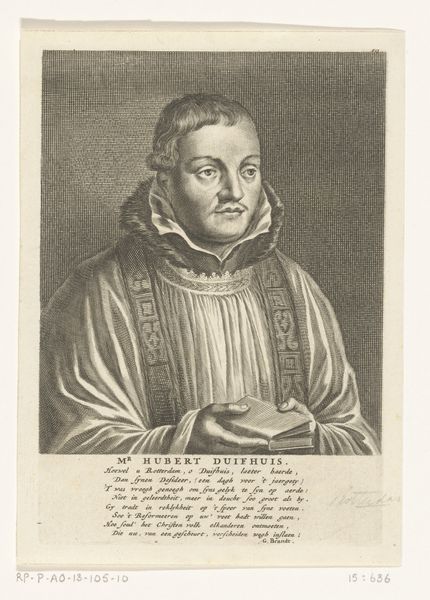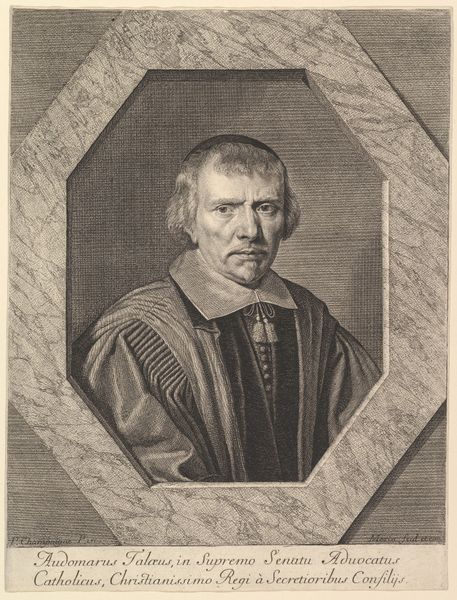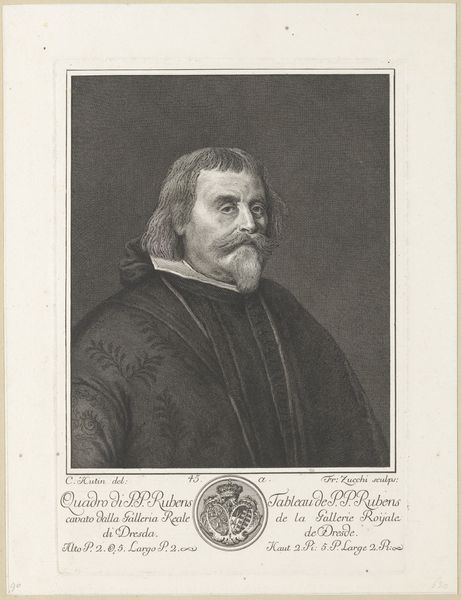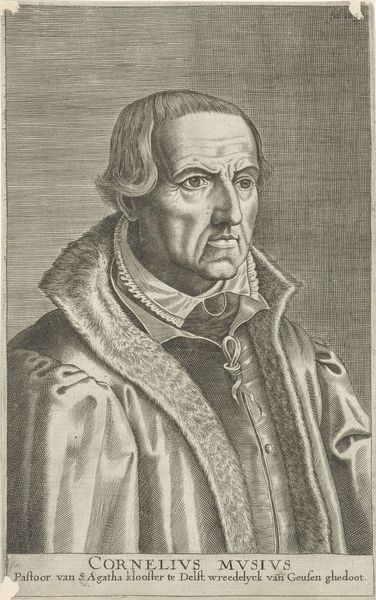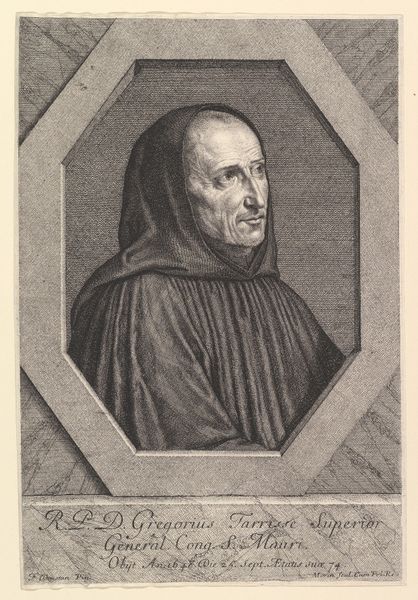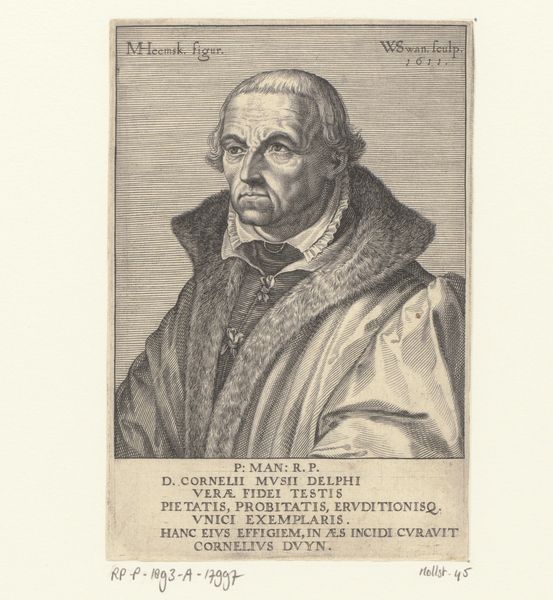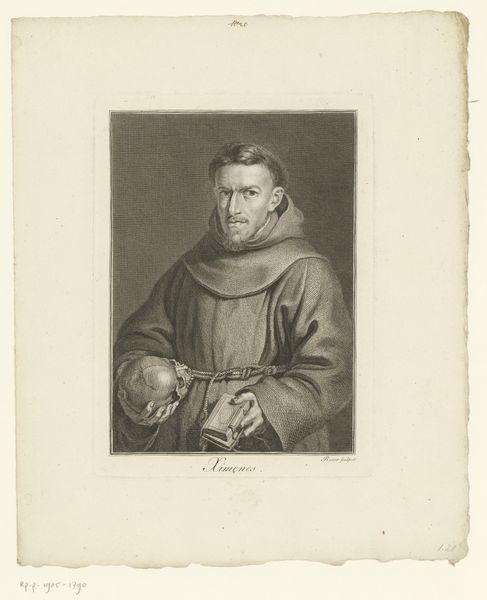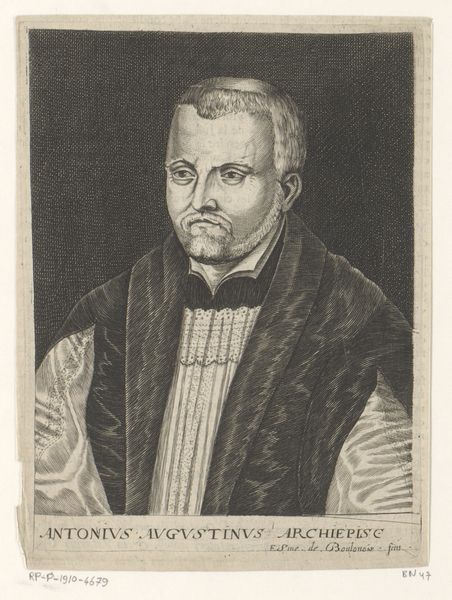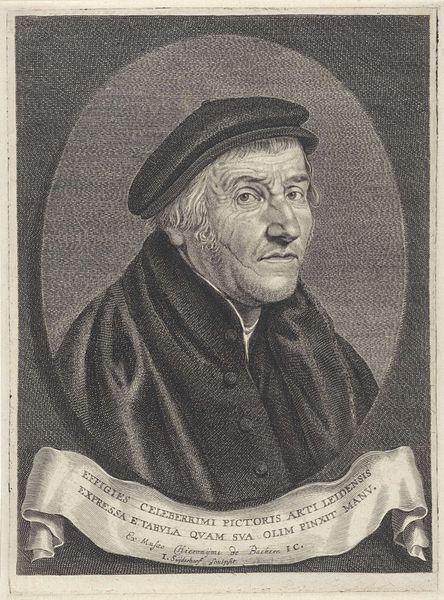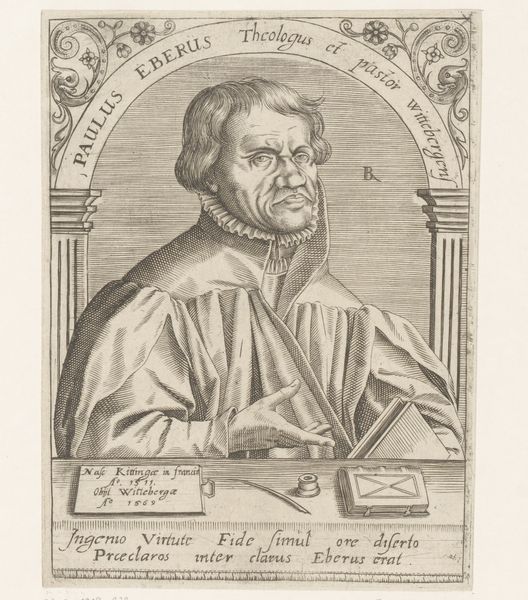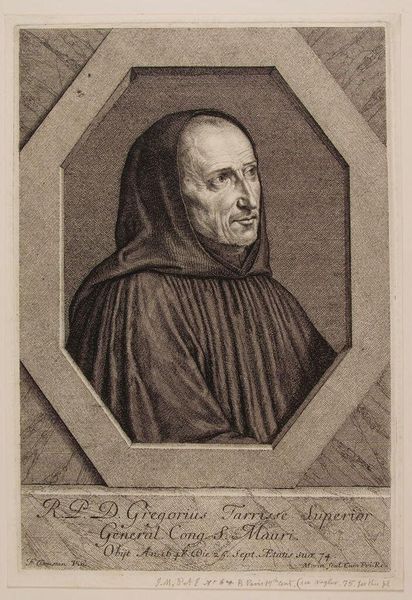
drawing, paper, dry-media, pencil, graphite, charcoal
#
portrait
#
drawing
#
charcoal drawing
#
paper
#
dry-media
#
pencil drawing
#
pencil
#
graphite
#
portrait drawing
#
charcoal
#
northern-renaissance
Dimensions: height 412 mm, width 269 mm
Copyright: Rijks Museum: Open Domain
Curator: Here we have Johann Joseph Freidhoff's "Portret van Martin Luther," created around 1801. It's a captivating drawing, currently residing here at the Rijksmuseum. Editor: Immediately, the texture of this portrait draws me in. It feels so tactile despite being on paper, you know? The softness achieved with charcoal and graphite gives it a wonderfully gentle, almost ethereal quality. Curator: Precisely! The contrast in textures certainly adds depth. Observe how the artist uses the dry media to render the fine details of Luther's face, capturing his stern yet thoughtful expression with incredible accuracy. The strategic employment of chiaroscuro amplifies this effect, molding the contours of his face and garments. Editor: Yes, and I’m fascinated by the process. Thinking about the labor involved in layering charcoal, fixing the medium, creating those subtle gradations of tone… it speaks volumes about the commitment required to produce such a refined piece in that era. Were these kinds of drawings commonly commissioned? What sort of artisanal networks supported their creation? Curator: Those are intriguing questions! While exact records are scant, drawings such as this one served several functions. They served as presentation pieces in and of themselves, or preparatory sketches for prints, dissemination being another form of authority. In examining this "Portret," note the implicit authority rendered by the meticulous detail, and the symbolism latent within the austere garments, denoting Luther’s profound influence on theology. Editor: Considering the materials—the cost and accessibility of fine paper, charcoal, and graphite in the 19th century—it highlights how this portrait probably circulated among a select audience. Luther's likeness becomes a commodity, signifying not just religious authority, but also a certain level of social standing. Curator: Indeed, the portrait is both a representation and a carefully crafted object laden with social meaning. The use of such rudimentary materials in such skilled hands further illustrates the tension and complexity that great artworks encompass. Editor: I find myself contemplating not just the image, but also the labor and social dynamics inherent in its creation and distribution. Thank you for helping me see this familiar subject with fresh eyes. Curator: It’s been my pleasure to offer some observations on its composition, style and technique. A fruitful exchange, indeed.
Comments
No comments
Be the first to comment and join the conversation on the ultimate creative platform.

